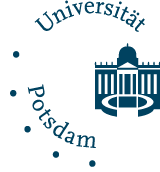by the intensive performance of work involving much hardship and toil, however a one- time act of the nature of the acts described above was forbidden by the sages as a protective" fence" to the commandment" Shabaton". What is significantly new in the Ramban's approach is his unification of all the expressions with which we are familiar. His approach is that the expressions" Shevut"," Ovadin De'chol", and" Mimtzo cheftzecha ve'dabber davar" Prohibitions all belong to the same halachic category, and that there is no difference between them. He seems to regard" Ovadin De'chol" and Prohibitions of" Mimtzo cheftzecha" as rabbinic" Shevut". This conclusion was also reached by our research into his commentary of the Bavli subject matter as indicated in the body of this thesis. A further conclusion that was reached while researching these sources: The Ramban tends to blur greatly the differences between the acts that were forbidden by the rabbis because they were" secular" or involved hardship and toil. He also makes no distinction between acts that are forbidden because of" 1"" which forbids an act that is performed in a secular manner, in accordance with the methodology of Rashi's school that categorizes these activities as" Ovadin De'chol". On the other hand he is not precluded from categorizing them as one of the " w". This is not the approach used by colleagues and disciples in Spain: R. Yona, Haraah, Rashba, Ritva and later the Ran.
B. An investigation of the Mishnaic and Talmudic sources regarding Prohibitions tied to hardship and toil on the Sabbath and Yom- tov discloses that:
1. In the Mishna and Tosefta hardship and toil is never given as a reason for the Prohibition of an act.
2. In the Bavli, Tractate Shabbat, Rabbi Yehuda explains( as interpreted by Rava) that the reason for prohibiting a person from opening a bundle of hay or spreading a bundle of stems for cattle is that we do not toil to feed an animal on the Sabbath.
- XV-
